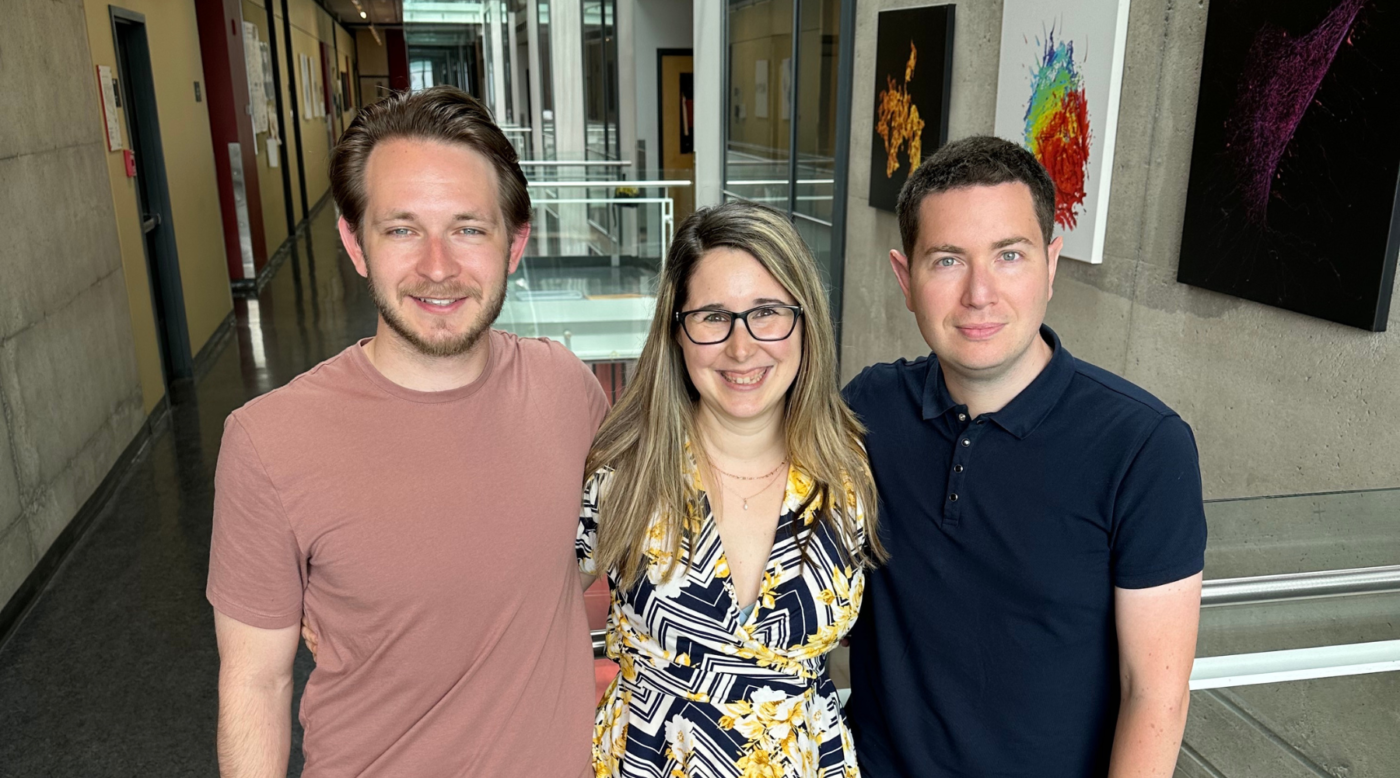News
Identification of a novel pro-motility pathway involving the protein CNK2 in cancer cells
Published on July 6, 2023
Cells constantly receive molecular signals from their environment which tell them how to behave. To respond, signals are transmitted from the outside to the inside of the cell during a process called signal transduction, or simply signalling. Like a relay race, signalling involves a sequence of events during which the signal is “passed on” from one factor to the next, until it reaches the molecular players that carry out a response. At IRIC, Marc Therrien, Director of the Intracellular Signalling Research Unit, and his team are interested in understanding how signal transduction is disrupted in cancer cells, allowing them to divide and spread throughout the body even in the absence of appropriate signals. Their recent work, which was led by the PhD students Jessica Gagnon and Guillaume Serwe, and the research associate David Kachaner, was published in Nature Communications and describes a new signalling pathway in which the scaffold protein CNK2 plays a central role to increase the motility of cancer cells. The research teams of Gregory Emery and Sylvain Meloche at IRIC also contributed to this study.
CNK2 promotes cell movement and metastasis
By assembling molecular complexes and targeting them to specific locations in the cell, scaffold proteins contribute to signal transduction regulation. Yet, the functions in signal transduction of the scaffolds of the CNK family are poorly characterized. The team from the Therrien lab obtained a global view of CNK functions in human cells using a proteomics approach. Interestingly, they found many interactors involved in cell motility for two members of the family: CNK2 and CNK3. Using several cancer cell types that can metastasize to other parts of the body,they discovered that downregulating CNK2 impairs cell migration and invasion, two types of cell movement. Moreover, they found that cells lacking CNK2 produced fewer metastatic tumours in a murine xenograft model, confirming its role during cell movement in vivo.
CNK2 coordinates pro-motility signal transduction
The research team then wanted to understand how CNK2 functions at the molecular level to control cell movement. Using proteomics and biochemical approaches, they found that CNK2 acts as an assembly platform for a protein complex that includes a previously unstudied protein called SAMD12, as well as Cytohesin. The complex activates the GTPase ARF6, which can then coordinate cell migration by regulating the GTPases RAC1 and RHOA, the anchors in this relay race that generate the forces required for cell movement.
Finally, the team asked where CNK2 is located within the cell, and which signals it transmits to stimulate cell movement. Using fluorescence microscopy, they found that CNK2 is located at the cell membrane during migration, and that its localization is governed by the cell surface receptor AXL. Upon AXL activation by its extracellular ligand, CNK2 is recruited to the membrane to relay the signal down to ARF6 and drive cell movement.
In summary, this study improves our understanding of the molecular mechanisms that generate motility in cancer cells. It establishes the scaffold protein CNK2 as a crucial player during the transmission of pro-motility signals from the cell surface down to the enzymes that control movement. Since motility is a requisite for metastasis, these advances could lead to the identification of new therapeutic targets to prevent the spread of cancer cells.
Cited study
Serwe, G., Kachaner, D., Gagnon, J. et al. CNK2 promotes cancer cell motility by mediating ARF6 activation downstream of AXL signalling. Nat Commun 14, 3560 (2023). https://doi.org/10.1038/s41467-023-39281-z
